#nukemaps
Explore tagged Tumblr posts
Text
I used Nukemap because why not?
1 note
·
View note
Text
also nobody in the know thinks a nuclear war will end all life on earth nowadays. the australians will be fine for sure but even in target countries nuclear winter is unlikely. not that it's a good idea though. you probably don't want to kill a quarter of humanity.
#i'm in 3rd degree burn and 1 psi overpressure range so i'm not speaking from a place of i personally will be fine either#check out nukemap if you have the time... sound of the summer
10 notes
·
View notes
Text
Nukemap : Visualiser l’impact dévastateur des explosions nucléaires
Le site Nukemap, développé par l’historien de la science Alex Wellerstein, permet aux utilisateurs de simuler les effets d’une explosion nucléaire dans n’importe quelle ville du monde. Cet outil interactif a pour objectif de sensibiliser le public aux conséquences catastrophiques de l’utilisation de ces armes de destruction massive, en montrant avec précision l’étendue des dégâts humains et…
0 notes
Note
rec for those interested on the theorised blast zones of nuclear bombs, i recommend
nuclearsecrecy . com
aka NUKEMAP by Alex Wellerstein.
i use it for writing research purposes, and its very interesting. obviously im not good enough at physics to vouch for its accuracy but it’s still cool <3
thank you! that is very interesting indeed
12 notes
·
View notes
Text
youtube
No one really knows who's making the decisions in the Biden administration anymore. Who ever it is, is both incompetent and insane. The lead time from missile launch to total nuclear war has been reduced greatly because of shorter missile ranges and hypersonic velocities. For those of us that grew up under the nuclear shadow, it's terrifying to see us back in an even worse situation than then.
4 notes
·
View notes
Text
Everybody in this room is in great danger right now. We have a nuclear weapon that if you hit New York, South Carolina is going to be gone too

"experts" are not asking that. creduluous idiots ("national security lawyers") are asking that. it's categorically and unequivocally false, physically impossible*, and obvious at first glance to anyone with a passing familiarity of the topic. anyone who treats the idea as remotely worthy of taking seriously in any way is a laughably unreliable source. reasoning under the cut
*not impossible in theory but categorically and unequivocally impossible in practice:
you can daisychain an unlimited number of bombs into one package, or simply drop multiple at the same time. two 100mt bombs is 200mt
radius does not scale at the same rate as yield (you don't get a radius 10x larger from 10x more material), and we do not have accurate models beyond the largest tested 57mt. if we detonated the entire stockpile of 88 metric tonnes of plutonium, which we are not currently producing, at perfect and total efficiency, it would yield, at a rate of 8kt/lb, a 1.5 gigaton explosion, one order of magnitude larger than theoretical tsar bomba limit. the entire 487 tonne stockpile of uranium would yield 8.5gt. (that link, OSTI, says 8kt/lb for both uranium and plutonium, which logically seems... not accurate, but i'll run with it)
so, maximally, 10 gigatons if every gram of fissile materials in the country, most of which are already in bombs too aged to launch, if detonated with perfect efficiency, which we are incapable of doing because it's a physical impossibility
i said we don't have reliable models and i would like to underline again that the estimates i'm showing here are not reliable, however: fireball radius scales at 250% per 1000% increase in yield, and light blast damage scales by 215%. that is consistent from b61mod3, the smallest in the US arsenal, to tsar bomba, the largest ever tested (getting these numbers from alex wellerstein's nukemap, same as the first image). therefore,
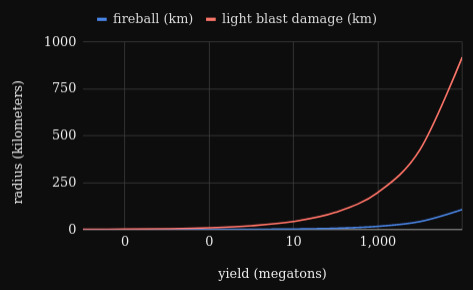
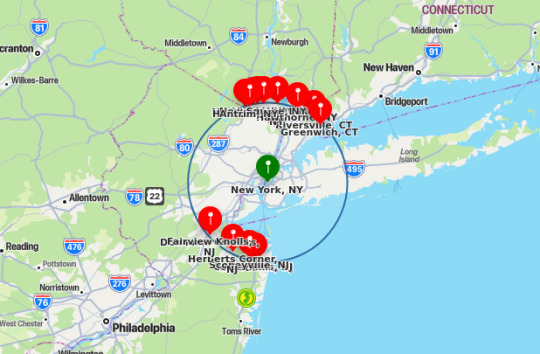

for a yield TEN TIMES LARGER than our entire stockpile of fissile materials (100gt), light blast damage does not reach south carolina. it would take ONE HUNDRED TIMES as large a yield for the light blast damage to reach the south carolina border. but wait! THAT'S NOT WHAT HE CLAIMED! in order for the fireball to cover the majority of south carolina's land,
it would require a 100 TERATON yield
that's ten fucking thousand times the size of the yield of every gram of fissile material in the stockpile. so then if you recall yield and materials by weight do not scale at the same rate, if we run the math again backwards,
this would require a FOUR MILLION PERCENT increase in the stockpile
that would be 3.5 million metric tonnes of plutonium AND 19 million tonnes of highly enriched uranium (or some other ratio of the two, the ratio is arbitrary if OSTI is correct that they have the same yield per weight). the accessible, mine-able-for-less-than-$130/kg uranium in the entire crust of the planet is about 40 million (imperial) tons, sorry for not sticking with metric. but wait! that's unenriched!!! enrichment yield is beyond the scope of this post, but suffice to say it is impossible to produce 19 milion ton(ne)s of HEU if we had already mined every cheaply accessible gram of raw uranium on earth
plutonium is produced from uranium (or other fuel) in a production reactor (of which we currently have 0) at a rate of 1lb per 4000lbs. that's 22,000 tonnes of plutonium from the entire 40-million tonnes of accessible unenriched uranium. so, we could never have 3.5 million tonnes of plutonium (barring, like, mining in space... a thing we have not yet done so much as once, so i can safely toss that out as absurd too)
using all fissile materials on the planet, it is not possible. full stop.
thus i rate this trump claim: the ravings of a fucking madman, fucking obviously. what a surprise, right
editorially and controversially, it's also pretty fucking stupid and uninformed to assume we would even bother to design larger nukes instead of smaller, higher-yield-per-weight devices
5 notes
·
View notes
Text

US announces development of powerful new nuclear bomb
On Friday, the Department of Defense announced a new effort to field an updated and even more powerful variant of the B61 series nuclear bomb currently in service. This new weapon, dubbed the B61-13, is expected to deliver around 360 kilotons of destructive power – 21 times the yield of the atomic bomb dropped on Hiroshima in 1945; it will be among the most powerful nukes in the U.S. arsenal.
“Today’s announcement is reflective of a changing security environment and growing threats from potential adversaries,” said Assistant Secretary of Defense for Space Policy John Plumb in a Pentagon press release. “The United States has a responsibility to continue to assess and field the capabilities we need to credibly deter and, if necessary, respond to strategic attacks, and assure our allies,” he added.
According to the Pentagon, these new weapons will replace existing B61-7s that are currently being phased out.
“The B61-13 represents a reasonable step to manage the challenges of a highly dynamic security environment,” said Plumb. “While it provides us with additional flexibility, production of the B61-13 will not increase the overall number of weapons in our nuclear stockpile.”
More than 7 times more powerful than the nuclear bombs currently being updated

The 72nd Test and Evaluation Squadron test loads a new nuclear-capable weapons delivery system for the B-2 Spirit bomber on June 13, 2022 at Whiteman Air Force Base, Missouri.
The B61-13 effort will likely tie directly into the ongoing B61-12 life-extension program that’s been underway since 2015. The B61-12 effectively serves as an overhaul for a large portion of America’s existing B61 series of nuclear bombs (known as the B61-3, B61-4, and B61-7). The -3, -4, and -7 variants all come with different and adjustable destructive yields ranging from 0.3 kilotons all the way up to 340 kilotons. All three variants will eventually be replaced by the single modernized B61-12.
The B61-12 program aims to use improved accuracy, delivered via a new tail kit and guidance system, to reduce the necessary yield of these bombs to no more than 50 kilotons. (The closer a bomb comes to its intended target, the less destructive power it needs to unleash in order to accomplish its mission.)
The B61-13 announced on Friday, on the other hand, will be comparable in yield to the soon-to-be-defunct B61-7, at approximately 360 kilotons. Below you can see a comparative blast radius, which was created using the NukeMap tool, overlaid over Moscow. It shows the 16-kiloton yield of the Hiroshima bomb, followed by the 50-kiloton B61-12, and finally, the newly announced B61-13’s projected 360 kilotons.
Related: The US has secretly been testing its new LRSO nuclear cruise missile

The blast radius isn’t the only destructive element of a nuclear strike, however. The map below, created by the Federation of American Scientists using the same NukeMap tool, shows a comparison of the radioactive fallout that would ensue after a 50-kiloton B61-12 detonation, versus the much larger 360-kiloton B61-13 that was just announced:
Why does the US want a more powerful nuclear bomb?
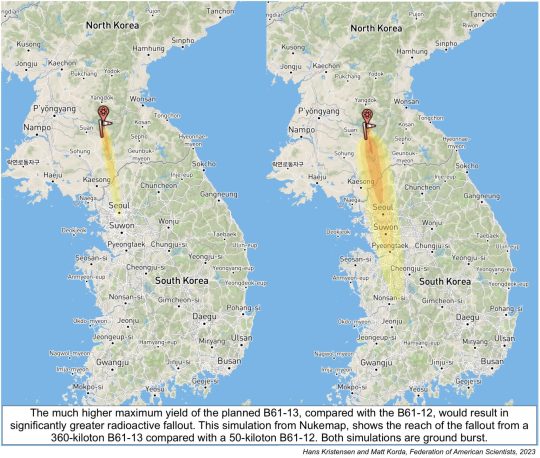
Historically, the United States has preferred fielding more accurate, less powerful nuclear weapons than some adversary nations like Russia. The newest nuclear ICBM in the Russian arsenal, the RS-28 Sarmat, for example, is said to be capable of delivering as much as 50 megatons – or 50,000 kilotons – of destructive power delivered via multiple independent reentry vehicles. While this B61-13 bomb does deliver a much larger yield than most others in American armories, it offers only a fraction of the power of the Sarmat.
However, by combining a relatively high 360-kiloton yield with the same precision guidance kits devised for the B61-12, these new bombs will offer a unique combination of pinpoint accuracy and significant destructive power, which the Federation of American Scientists posits could make for an effective means of targeting even hardened subterranean structures.
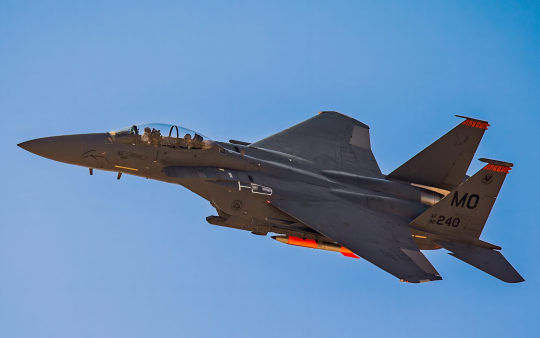
An F-15E Strike Eagle from Mountain Home Air Force Base, Idaho, carrying a B61 Joint Test Assembly nuclear bomb. (Courtesy Photo by Santos Torres)
“Due to the phenomenon of ground-shock coupling, the B61-13’s relatively high yield and accuracy will likely enable the bomb to strike underground targets with yields equivalent to a surface-burst weapon of more than one megaton,” according to experts.
The Pentagon did not acknowledge this bunker-busting capability, but did specify that these new bombs will be delivered via “modern aircraft.” The 50-kiloton B61-12 has already been tested aboard the F-15E Strike Eagle, but will eventually make its way to the rest of America’s fighter fleets. Reports suggest the higher-yield B61-13s will be reserved for strategic bombers; these will likely be the B-2 Spirit and B-21 Raider due to their stealth allowing for deep penetration strikes inside contested airspace.
The B-52 bomber will still play a significant role in the airborne leg of America’s nuclear triad as well, though it will more likely be used to deliver America’s new Long Range Stand Off (LRSO) nuclear cruise missile that has seen significant testing in recent months, as it was revealed.

However, it’s feasible that the decision to field the more powerful B61-13 may not have to do with a dire need for a high-powered, precision-strike nuke, as for some time the pervasive narrative within the Pentagon had been that the combination of accuracy and 50-kiloton yield delivered by the -12 would be sufficient for any potential target. Instead, it’s possible that this decision was politically motivated as a means to finally do away with America’s most powerful (and expensive to maintain) nuclear bomb, the 1.2-megaton B83-1.
The variable-yield B83 series of bombs has been in service since 1983 and has been the subject of heated political debate in recent years. In 2014, the Obama administration announced plans to retire these bombs in favor of the aforementioned B61-12s. Four years later, in 2018, the Trump Administration overturned that decision, saying the powerful bomb needed to stay in service until a suitable replacement could be fielded. In 2022, it became the subject of debate once again due to costs; $52 million are allocated toward maintaining America’s stockpile of aging B83s each year.
While the B61-13 won’t have the same massive yield as the B83-1, it stands to reason that its 360-kiloton yield is large enough to hold secure underground facilities at risk, and as such, may be seen by lawmakers as a viable replacement for the increasingly expensive B83-1.
7 notes
·
View notes
Text
Interactive nuclear blast mapping:

634 notes
·
View notes
Photo





「デーモン・コア」とは、日本に投下される予定だった核兵器を転用した研究用のプルトニウム塊で、手動でドライバーを動かして行う危険な臨界実験で知られています。死亡事故にまつわるある種の「不謹慎ネタ」であるデーモン・コアが、唯一の被爆国である日本を中心にインターネットミームとして拡散されていることについて考察した記事が公開されています。
The meme-ification of the "Demon Core" https://doomsdaymachines.net/p/the-meme-ification-of-the-demon-core
デーモン・コアが起こした死亡事故のうち、特に有名なのは1946年5月21日に発生した2度目の事故です。この日、カナダの物理学者のルイス・スローティンはロスアラモス研究所の一室でデーモン・コアを操作していましたが、実は本番の実験ではなく測定のやり方を実演していただけでした。
というのも、スローティンはビキニ環礁で行われる戦後初の核実験チームの一員として研究所を離れる予定だったため、留守の間に実験を引き継ぐ科学者たちに手順を教える必要があったからです。
by Wayne Hsieh
「ドラゴンの尻尾をくすぐるようなもの」と評されたこの危険な実験の最中、スローティンは手を滑らせてしまい、プルトニウムの臨界によって発生した致死量の放射線を浴びたことで、事故から9日後に放射線障害で亡くなりました。
スローティンが「ルーファス」と名付けたプルトニウム塊が「悪魔の核」、つまりデーモン・コアと呼ばれるようになったのは、この事故がきっかけだといわれています。
そして、終末をテーマとしたニュースレターのDoomsday Machinesが、デーモン・コアを記事で取り上げることにしたきっかけは、2019年に目にした以下の日本のミームです。
デーモン・コアをモチーフとしたこのTシャツは、日本でもたびたび話題になっています。
めちゃくちゃかわいくて一目惚れで買ったけど後から意味を知って戦慄したTシャツがある「青白い光が…」「I LOVE SCIENCE じゃないんだよ…」 - Togetter [トゥギャッター] https://togetter.com/li/2160000
Doomsday Machinesのライターであるアレックス・ウェラースタイン氏は、通販でデーモン・コアTシャツが売られているのを見た印象を「当時はかなり驚きました。というのも、このちょっとしたカワイイ(kawaii)描写と『I LOVE SCIENCE』というフレーズが一種のブラックユーモアであると気づくには、スローティンの実験の全体像を知っていなければならず、そういう意味でこれは知る人ぞ知るネタだったからです」と振り返っています。
ウェラースタイン氏がGoogleトレンドでデーモン・コアの話題の広がりを調べたところ、2019年ごろからデーモン・コアがアメリカでも爆発的に流行していたことがわかりました。
以下は、「デーモン・コア(青色)」と「スローティン(赤色)」のトレンドの推移を、参考の「NUKEMAP(黄色)」とともにグラフ化したものです。
2020年代に入ると、デーモン・コアのインターネットミームが大きく広がり、2021年にはミーム集積サイトのKnow Your Memeに専用ページが作られました。
Know Your Memeによると、デーモン・コアをかわいい女の子のイラストと組み合わせた初期の作品のひとつは、2018年4月4日に投稿されたイラストだとのこと。4月18日には同様のイラストが投稿されています。
その後もさまざまなアニメや漫画のキャラクター、ひいてはゴジラなどがデーモン・コアとともに描かれています。
ウェラースタイン氏は、デーモン・コアの広がりについて「『予期せぬ並置から生まれたユーモア』の典型的なケースだと思われます。スローティンは若い男性であり、事故もまた若い男性やその身近で過ごしたことがある人なら誰でも知っているような、危険を顧みない虚勢によって引き起こされました。ですから、かわいい日本の女子が、この非常に男性的な実験をしているというのはかなり意外であり、それがおそらくこのミームの主な発信者であり受信者でもある『オタク男子』に二重に響いているのでしょう」と分析しました。
かわいらしいパロディイラストとは対照的に、デーモン・コアが引き起こした現実の事故は非常に恐ろしいもので、生きながらにして肉体が崩壊していった犠牲者の治療記録には、思わず目を覆うような記述があります。事故はスローティンの功名心や不注意が招いたものですが、だからといってスローティンが同情に値しないような、苦しんで死ぬべき人間だったわけではないと、ウェラースタイン氏は強調しました。
「デーモン・コア(悪魔のコア)」で被ばくした科学者はどのようにして死んでいったのか - GIGAZINE
ある種の悪趣味さに加えて、デーモン・コアミームを複雑にしているもうひとつのポイントが、日本を流行の震源地にしている点です。デーモン・コアは広島や長崎に投下されたものに続く3番目のプルトニウムコアで、日本の降伏がもう少し遅ければ間違いなく日本のどこかに投下されていました。そうなっていれば、子どもや女性、お年寄りを含むさらに多くの民間人が原爆で命を落としたり、スローティンと同様の苦痛を味わったりしていたことは想像に難くありません。
ウェラースタイン氏は「もしデーモン・コアで不謹慎なジョークを言う権利が誰かにあるとしたら、それは日本人かもしれません。なぜなら、アメリカ人は広島と長崎で原子爆弾を爆発させてからずっと、似たようなジョークを飛ばしてきたからです。それは戦時感情から来る一時的なものではなく、日本の犠牲者の苦しみが広く知られるようになり、また日本がアメリカの重要な同盟国になってからも続きました」と述べています。
例えば、アメリカのテレビ番組に出演したあるコメディアンは、日本原水爆被害者団体協議会が2024年のノーベル平和賞を受賞したことに言及し、「原爆の生存者にとって、受賞の知らせは人生で2番目に大きなサプライズだったでしょうね」と言って会場の爆笑を誘いました。
記事の締めくくりに、ウェラースタイン氏は、「私は『ユーモア警察』になるつもりもなければ、デーモン・コアがコメディーの『禁止区域』だとか、まだ『時期尚早』だとか言ってお説教するつもりもありません。ブラックユーモアは、人間が奇妙で倒錯したやり方で暗闇に対抗し、恐怖を飼い慣らすための一種の対処法です。コメディー映画『博士の異常な愛情』がそうであるように、原爆はしばしばこのメカニズムの対象となってきました」と述べました。
なお、GIGAZINEは2011年にデーモン・コアを取り上げています。
未臨界量のプルトニウムの塊「デーモン・コア(悪魔のコア)」 - GIGAZINE
この記事のタイトルとURLをコピーする
・関連記事 核兵器製造を目指した「マンハッタン計画」のコスト内訳を調べてわかったこととは? - GIGAZINE
日本に投下された2つの原子爆弾が製造&運搬される様子を収めた当時の貴重な写真集 - GIGAZINE
55年間機密扱いだった核実験の様子を収めた750本のフィルムが��密解除されて一部がYouTubeで公開される - GIGAZINE
1発で地球を破壊する核爆弾を作る狂気の「サンダイヤル計画」はいかにして生まれたのか? - GIGAZINE
第二次世界大戦末期に日本が原爆開発を行っていたことを示す新たな証拠が見つかる - GIGAZINE
・関連コンテンツ
無料で核戦争で生き残るためのスキルや道具の作り方が学べる書籍「Nuclear War Survival Skills」
乾燥機の中の放射線量が高くなる理由とは?
二クロム酸アンモニウムとチオシアン酸水銀が出会うととんでもないものが出てくる
未臨界量のプルトニウムの塊「デーモン・コア(悪魔のコア)」
激怒して「Fワード」をツイートしている人を地図上に表示する「FBomb」
核攻撃に備えたDIYシェルターはどのように流行して廃れていったのか
加速器によって大量の放射線を浴びた男性
核実験が実施された場所や爆発規模を地図上で時系列で表示する戦慄のムービー「Trinity」 << 次の記
(悲惨な事故を起こした「デーモン・コア」が日本でミーム化しているのを海外の人はどう受け��めているのか? - GIGAZINEから)
0 notes
Text
MAP REVEALS POTENTIAL IMPACT OF RUSSIAN NUCLEAR STRIKES ON MAJOR U.S. CITIES
The possibility of nuclear warfare remains one of the most catastrophic threats facing humanity today. The development of nuclear weapons has dramatically shifted the nature of conflict, introducing the potential for destruction on an unimaginable scale. Recently, a simulation using the NUKEMAP tool demonstrated the devastating consequences of a nuclear strike on major U.S. cities, offering a…
0 notes
Text
0 notes
Text
While the nuke was set off underground, I don't believe it was set off deep enough underground to be considered a sufficient depth to be contained.
Maxo had only covered it with one layer (1m) of cobblestone, and it was just an empty hole to hold the bomb whereas most underground nuke tests were in a designed shaft made of corrugated steel and filled with sandbags and dirt to contain and dampen the explosion.
Buried tests do not necessarily mean contained. The Baneberry bomb picture used above to show an uncontained explosion’s aftermath was actually buried 274m underground, but due to the geology having high water content opened up fissure 91m away and created a cloud of radioactive dust and vapor that was over 2.4 km tall. (x) This cloud was, however, released 3.5 minutes after the explosion, which would have given the islanders additional time to run away.

Being buried only ~20m underground (it's measured by the ground under the nuke) is so shallow that the blast is most certainly uncontained. The Teapot Ess, shown above as the 5th pic in op's post, was buried at a similar depth created a 91m wide crater, 39m deep. Note that the crater does not account for the entire blast radius. If someone was standing right outside the crater they would still be killed instantly due to the shockwave
In fact, the surface and shallow underground bursts are so similar that the Department of Defense lumps them in the same category (Chapter 6) in their technical report on The Effects of Nuclear Weapons in 1977.
Below we can see that the surface burst and the shallow depth of burial. Note that the crater we saw in a contained blast in ops post above is that of a subsidence crater, which buried far greater that Maxo's bomb, which most resembles figure c:

This is also not accounting for the size of the bombs. As op stated before most nowadays are 10-50 megatons of TNT (Mt). There have been no underground near that scale. The Teapot Ess was only 1 kiloton of TNT (kt) and the Baneberry was only 10kt.
The largest (known) nuke to be detonated underground was the Cannikan at 5 megatons, and was buried (in a prepared backfilled shaft) 1870m deep to contain the explosion.
But this all begs the question, how safe would our islanders be?
Well, we still don't know how strong Maxo's nuke is. It is extremely large, at over 15m tall. Generally, the larger the bomb the more explosive power it can hold. Little Boy was 3m long and was 15 kt strong, while the Tsar Bomba, the strongest (known) nuke to date, is 8m and 50Mt (the original plans were to make it near 100 Mt - scary - but they scaled it down for testing). Though this is not always the case. The Mk-17 is larger than the TX-21 at 7.5m long with the latter at <4m, but the TX-21 is 14.8 Mt vs the Mk-17's 10 Mt.
From now on any general, on flat ground assumptions about blast radii come from nukemap (I *highly* recommend anyone check it out, it's very fun and informative):
In a detonation at surface level on flat ground, the Tsar Bomba's fireball radius is 6.7 km. Anyone inside of this is immediately vaporized. The heavy blast damage radius is a little over 8km, and anyone inside of this zone is almost certainly dead.
The boat's location was 3573, 3743. Max placed his bomb right under the train station, at around -26, 3. This places the boat about 5190.4m away from the boat, or about 5.2km. This, as you may have noticed, is well within the Tsar Bomba's fireball.
Little Boy, the 15kt bomb dropped on Hiroshima and killed 45k - 70k people instantly, has a fireball radius of .26km and a heavy blast damage radius of .55 on flat ground. It has light blast radius of 3km, wherein you might still be injured but are unlikely to die instantly.
We would expect the boat and anyone near the boat but not on it (Foolish, Cellbit, Tina, and Ironmouse) to be relatively safe from this strong of an explosion. Badboyhalo and Dapper were at about 2900x 3650z, or about 4.6km away from ground zero, at the time of explosion, so we would expect them to be safe too.
However, 15kt is a very, very small bomb compared to the ones we have nowadays, as I mentioned before. A 1400 kt, or about 1.4 Mt, nuke (still much smaller than today's nukes) has a moderate blast damage radius of 5.1km, which the boat resides just outside. (The thermal radiation radius is 12.4km, within which everyone will have 3rd degree burns, but we're going to ignore this seeing as the Federation can heal a man who was torn apart with a chainsaw and then pushed from a balcony).
Maximus was 4.7km away at 3050, 3580, which is outside the heavy blast damage zone but within the (very deadly) moderate zone.
Baghera was at 3250, 3295; about 3.9km away. The nearest by far, but also outside the heavy blast damage zone. She was, however, deep underground. For a bomb of this hypothetical size, one would need to be over 300m below the surface of ground zero to survive. Baghera was only 130m below the surface, but nowhere near ground zero so it is very likely she (and the eggs, assuming they were still underground) survived. Tbh, she was probably safer than everybody else, especially since her main concern would have been vents letting in radioactive air and she had a gas mask.
However, a factor I've been neglecting is the geography of the blast region, especially in regards to elevation. As we see in the map of Hiroshima below, the blast regions do not form perfectly concentric rings, but rather are hemmed in by high elevations that shield the nearby landscapes from the blast.

Egg Island is littered with many mountains. In particular, a mesa biome was in between the boat and the bomb, which has many mountains that would affect the bomb's blast zones.
Maximus was climbing up a mountain on the side facing the bomb, so it makes sense that he would be hit by the shockwave and die, either directly or because it caused him to lose his balance and fall.
Badboyhalo was closer to the bomb as the crow flies, but he and Dapper were on the other side of a mountain, so it is perfectly reasonable that he could survive (albeit not unharmed)
The boat was shielded by a mountain during the blast (and so was everyone else), so theoretically we could have stronger bombs that would have still left the boat unharmed.
TLDR; while the nuke was buried, it was so shallow that it wouldn't have mattered but the size of the bomb being small enough so the boat was safe and the island's terrain would have made it very likely that most of the islanders escaped, and being so far underground would have likely kept Baghera and the eggs alive.
Hi, I’m A.D., I’m a historian, and let’s talk about the nuclear bomb and why the one that exploded at the end of QSMP’s Purgatory Event probably didn’t kill all that many people upon initially exploding.
The nuclear bomb, as everybody knows, has only ever been used in a war twice. Both explosions were caused by the United States in their war against Japan at the tail end of World War Two in one final terrible last ditch attempt at ending the war through any means necessary.
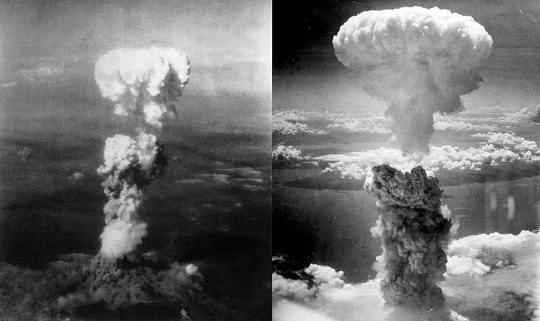
Pictured above are the atomic explosions at Hiroshima (left) and Nagasaki (right.)
These are big huge clouds, which makes sense! Nuclear weapons, on average, have the strength of somewhere between 10 and 50 megatons of TNT. Hydrogen bombs, meanwhile, are WAY worse, with the first test coming in at a whopping 10 MILLION tons of TNT.
To put it in Minecraft terms for all you nerds out there, imagine Doomsday from the Dream SMP and how it razed an entire nation to bedrock level by using somewhere in the range of 20 stacks of TnT (if I’m remembering correctly.) A nuclear bomb, in these terms, would have blown L’Manberg up something like eight times over and then some.
So that’s. Bad. Right?
Well, here’s the QSMP’s bomb as was constructed by our favorite depressed detective, q!Maximus:
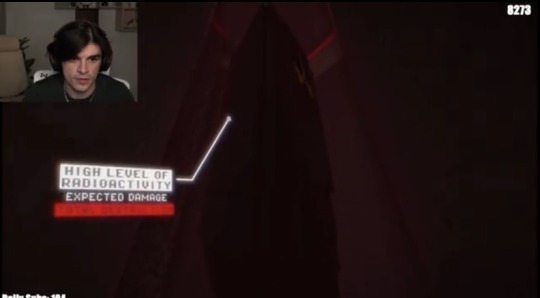
This bomb, notably, is underground. It was never dug up, it was just moved somewhere else. It isn’t above ground, and it never left this room. Watch the cutscene back (linked here), the bomb never left the room.
So this is where underground nuclear testing comes in.
Underground testing began in 1951, and it remains the only form of scientific nuclear testing not banned by the Limited Test Ban Treaty of 1963.
No big surprise, a lot of early underground tests were conducted by the US out in Nevada, where they kinda tested nukes legit fucking EVERYWHERE in the desert for a long time. Below are some photos, just for funsies:

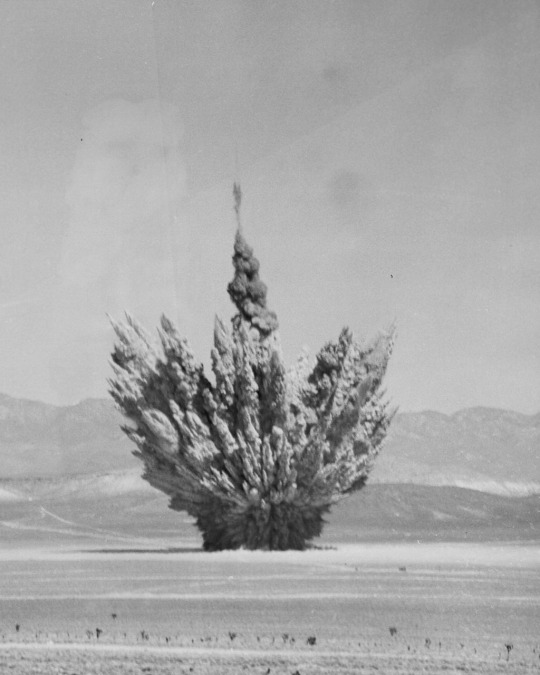
What’s important about underground nuclear explosions is that they actually end up releasing less radiation into the atmosphere than regular nukes do. What happens beyond that depends on whether or not the radiation remains contained.
A contained explosion’s aftermath:

And an uncontained explosion’s aftermath:
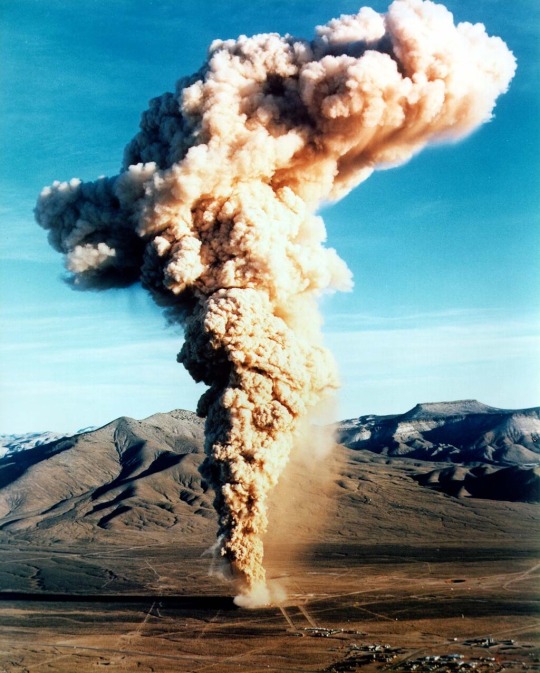
There hasn’t really been many negative biological effects reported from these underground tests, which is really saying something considering how close to nuclear blasts the US had its guys at most of the time (see below)

The worst you got out of the underground tests was some radioactivity in cows’ milk, which is NOTHING compared to the effects of the above-ground nuclear testing at the Nevada Site:

So… what does this mean for the QSMP?
Well, if we’re going off of historical and scientific precedent, legitimately nothing substantial happened to the islands of Purgatory. There’s more of a risk of dying from the pre-established radioactive rain disaster effects as well as the earthquake and meteor disasters.
Fun fact! Underground nuclear explosions usually registered as weaker than actual fault line activity, aka actual earthquakes.
If Maxo’s nuke was dropped from above, the devastation would be greater. Nuclear fallout is no joke; even today, cancer rates in the American West are still pretty high from the above-ground testing conducted at the Nevada Site. The Bikini Atoll will never be the same after all the testing the US did there, either.
But, because this nuke seemed to have gone off underground, I can safely assume that the damage done to the islands above was minimal at worst. Maybe there’s a radioactivity leak, but everybody staying on the islands had already experienced radiation up to that point.
It’s important to remember this because several characters did stay behind on the islands, and the fandom is assuming them dead because, well. A nuke went off. But those characters aren’t dead yet (outside of q!Maxo, who was possibly directly above the nuke when it went off and thus would’ve been hit full-force by the explosion.) Many were on the beach, far from the the nuke. They’re fine, and you can prove it with history!
TLDR; the nuke from the end of Purgatory was assumedly set off underground, which would have negated a lot of its potential damage, so everybody’s fine except for the unfortunately deceased q!Maxo
419 notes
·
View notes
Text
Ядерный удар по Москве и Санкт-Петербургу. Сколько погибнет людей от взрыва и радиации
Согласно моделированию, проведенному изданием Newsweek с помощью сервиса Nukemap (создан историком науки и ядерных технологий Алексом Веллерстайном) новая ядерная гравитационная бомба B61-13 мощностью... Читать дальше »
0 notes
Text
I think it kind of depends, because depending on the exact design of the bomb an 8 times greater yield may mean more of the yield is coming from a fusion stage, plus if the enemy is trying to maximize the radius of lol-get-fucked shockwave the bigger bomb would be a higher-altitude airburst so there's not necessarily 8 times more radioactive material. The bigger bomb also probably carries more of the fallout higher into the atmosphere so it may not come down anywhere near the city that got hit.
Fallout shelters designed early in the cold war, with expectations of 'the bombs will be pure fission, relatively small, and aimed at downtown/urban areas; suburbs are far enough away you only need to worry about fallout' wouldn't be much help against hydrogen bomb blasts that would be tens or hundreds of times stronger.
Ehh... you may be underestimating just how obnoxiously far out some of the suburbs in US cities are. This is a Nukemap rendering of the effects the Tsar Bomba (this was a PR stunt not a practical weapon that a city could be hit with, actual usable nukes are smaller) would have on Houston. I've scribbled over the 5 psi blast radius where buildings really start getting torn down because it was hard to see. A lot of the suburbs are in an area where an underground shelter would help with the blast, although most of the outer orange circle would probably be on fire and I'm not sure how well backyard fallout shelters would weather a firestorm.

I think the individual bombs have actually gotten smaller compared to the early Cold War too. This is partly because ICBMs are more accurate, but partly also because modern ICBMs are likely to contain several bombs that can be independently targeted (MIRVs), which can destroy a larger area more efficiently than a single larger bomb.
As far as backyard vs community fallout shelters though, I am curious about whether the low density of most US cities plays into that as well. It occurs to me that in a car-dependent 'Murican suburb, getting people to try and shelter in place in a backyard shelter might be beneficial just by keeping panicked people off the roads and transit networks.
It's interesting to think about human nesting instincts and the ways that it goes wrong sometimes.
Like, bomb shelters. Are they actually going to protect you in the case of a nuclear blast? Probably not, if we're talking about the kind of thing that you install in your backyard through a summer of sweat. But it probably felt good, when people were worried about the bombs falling, like they were doing something, making the home, a place that now felt scary, into a place that was once again safe.
66 notes
·
View notes
